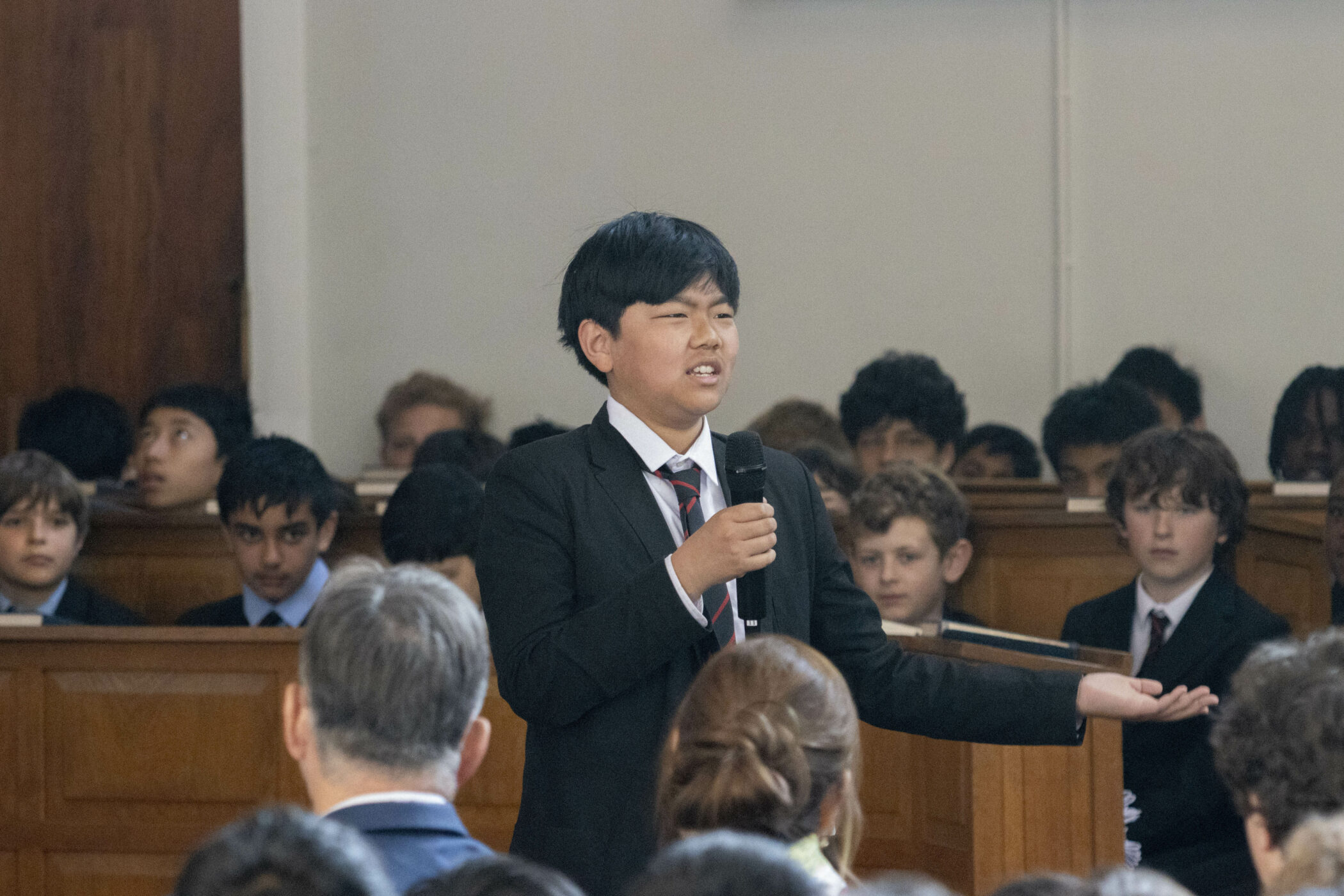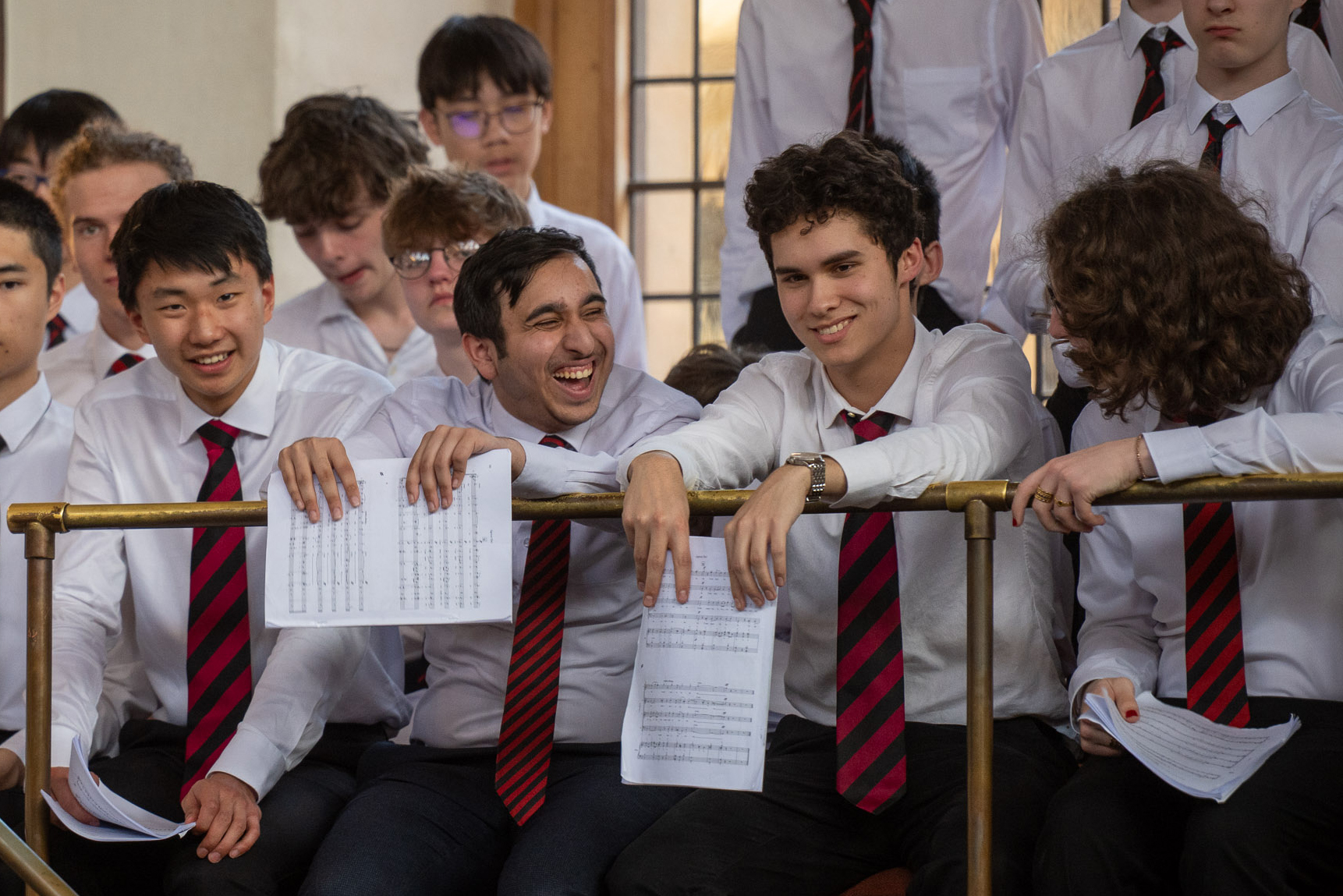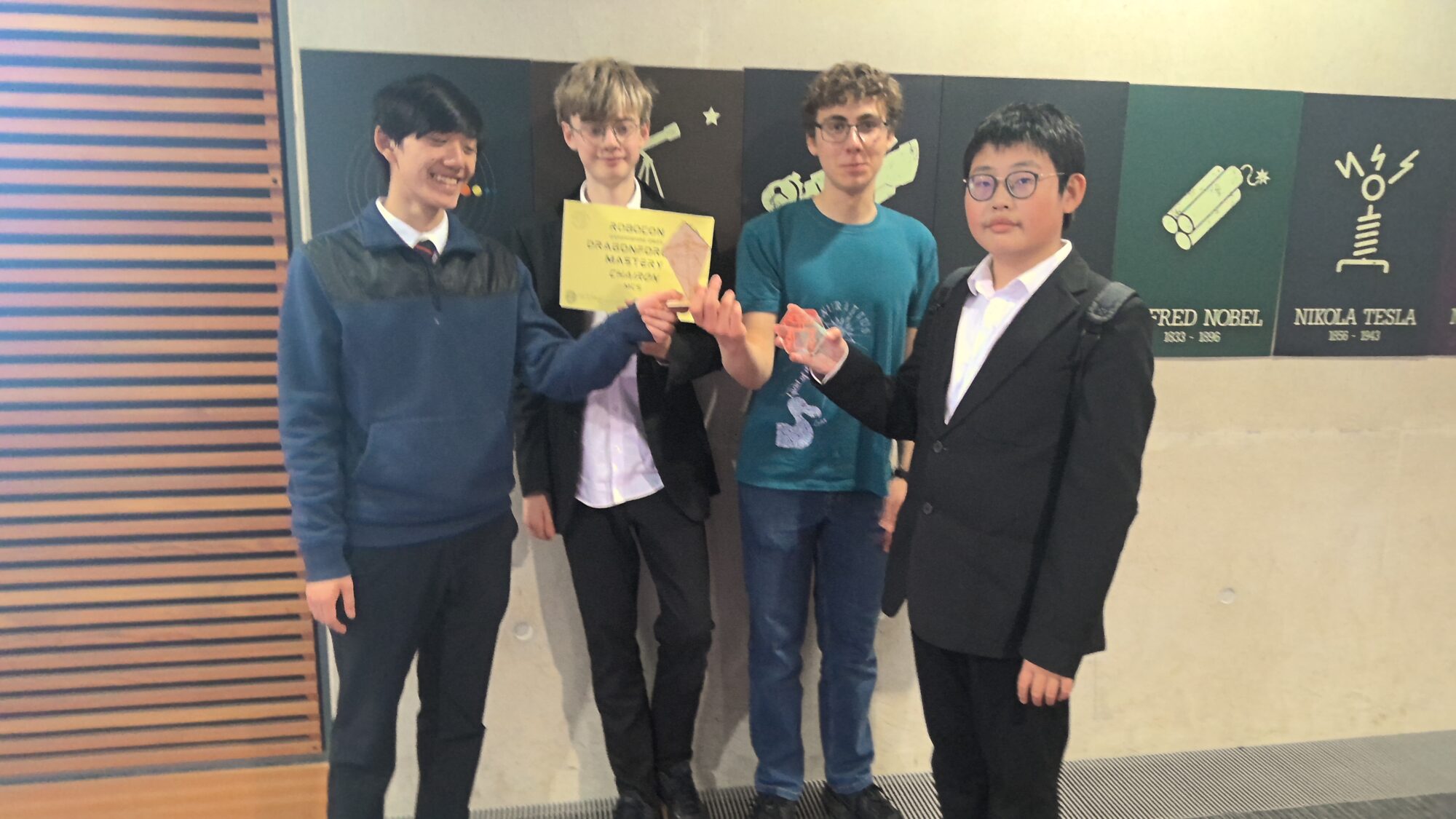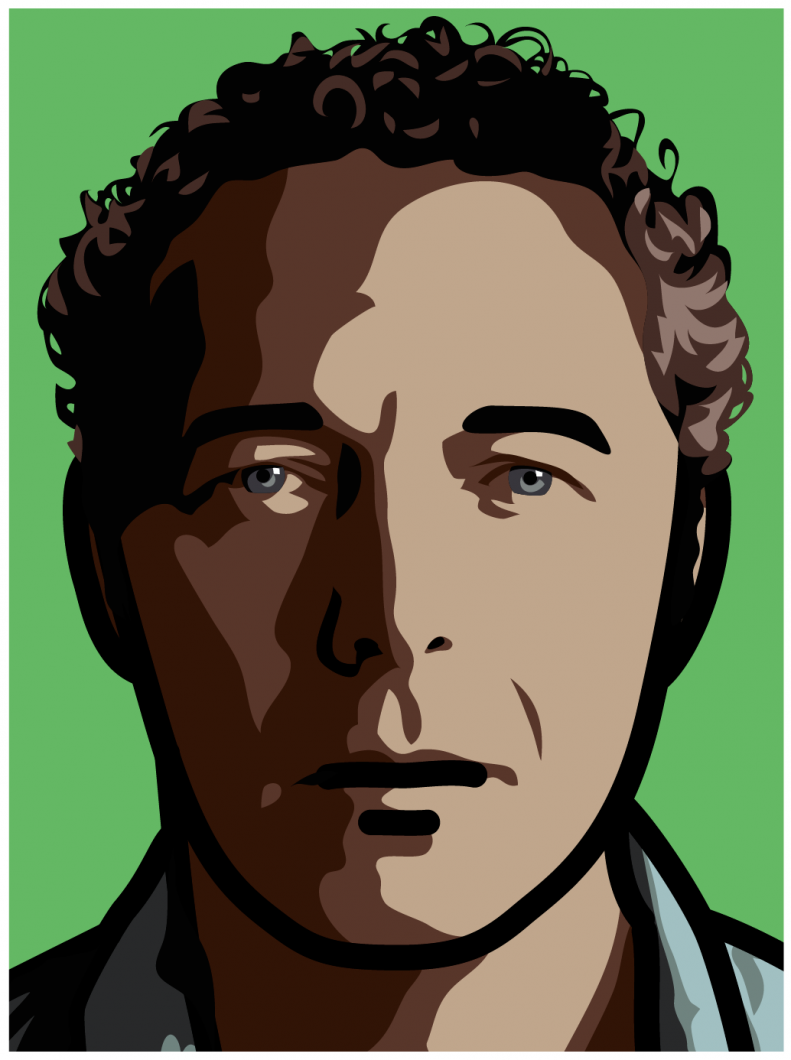
Hilary term saw the unveiling of a one-of-a-kind art installation by visual artist Julian Opie, a former pupil from 1972 – 1977. The animated film, entitled Paul and Padmini running features a boy and a girl dressed in school uniform, drawn in the pared back style that Opie has employed for many walking, landscape and portrait works, and for which he is internationally famous.
Master Helen Pike, who commissioned the installation, said “it is such a coup for the school to have Julian’s work to inspire us every day. It is the first thing I see when I come into school every morning and it always makes me smile.”
Here, in an exclusive interview for MCS, he explains his inspiration behind the work, recalls his schooldays at MCS and offers advice to current pupils considering art as a career.

In conversation with
Julian Opie
I think our brains are tuned to notice movement, to follow it and to enjoy it. Anything that moves in the landscape attracts our attention, an animal, a car, water, birds, danger.
When looking at art it’s easy to feel a bit nonplussed, to wonder what this is, why is it done like that or even worse to ask “is it art?” You stand in front of it, staring at it, looking at the different bits. What then if the artwork itself is moving? This interrupts the static process of looking and judging and replaces it with tracking, following and reading. A lot of my works move or use some similar trick to engage you. An artwork has an element of a magic trick, to fool the eye, to amaze and amuse, to conjure up.
There is a logic to this work that is fairly simple to follow and I hope enjoyable to read. The boy (Paul, my 13 year old son) seems to chase Padmini (my 16 year old daughter) and then Padmini appears to whip around to the beginning of the painting and chase Paul but meanwhile she has switched to what was his colour set, white on red.
(Image: © Julian Opie)
When she crosses to the other half of the painting she leaves the land of red and arrives in a white zone where to be seen she must change to red. It’s a kind of game and – like all games – it must be logical, straightforward and follow its own rules.
For thousands of years Stone Age people drew animals and hunters in charcoal and ochre on cave walls. I don’t have any ochre and I don’t live in a cave but I have a TV and a phone and am surrounded by bright colours and signs and symbols like road signs and adverts. Like the cavemen I use the materials and subjects that I see around, that we all share. In this case, a pair of 55” LCD screens with animations drawn on a computer in Adobe Illustrator played in an endless loop on a media player.
I have been drawing people walking for years. Walking seems the most natural and obvious of human movements, it’s the thing we see most people doing out on the street and above all it’s something I am able to draw. By repeating one single drawn step I can draw walking. Ancient Egyptians drew people striding side-on, it gives a sense of purpose, direction and energy to the image. The walking people don’t address you, they walk past in profile oblivious to the viewer which gives them a kind of dignity, like an animal. A bit bored of making walking images and having tried dancing figures I began to notice people running, not the athletes kind of run but more the kind of “I’m a bit late” or “I’m sorry I’m in your way” half run. This still felt normal but it gives an extra dynamic to the person and a smoother movement where hair and clothes move a lot more than when simply walking.
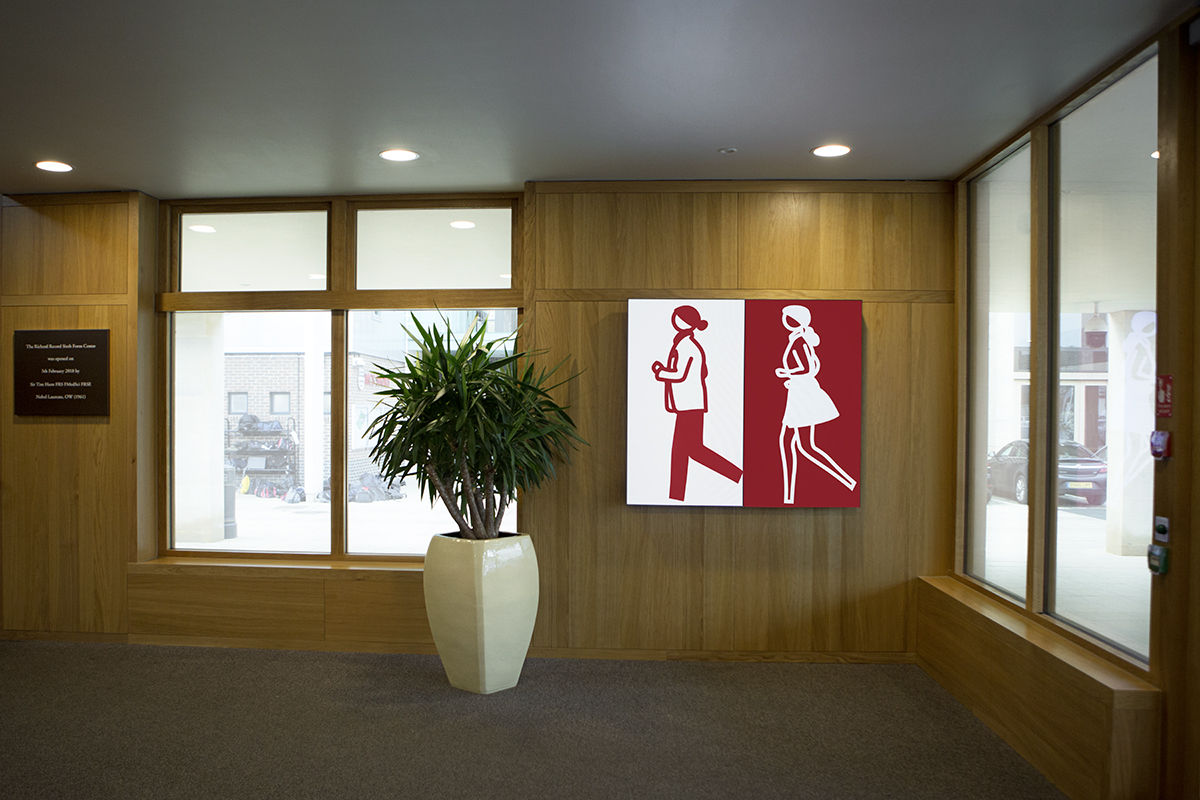
"Ancient Egyptians drew people striding side-on, it gives a sense of purpose, direction and energy to the image. The walking people don’t address you, they walk past in profile oblivious to the viewer which gives them a kind of dignity"
Julian Opie, 2020
Other than enjoyment I don’t expect any particular reaction from people. I’m not trying to make a point or persuade you of some opinion. I make art works because it’s fun to do so and I’m a bit obsessed with the activity, like reading a great book or playing an addictive computer game. Before I finish one work I’m planning the next. I have been doing that since I was about 13. I’m usually working on about twenty or more works at a time. This particular painting, or film, or whatever it is, is part of a large group of “people running” works. I drew 24 people running, inviting everyone I could think of, friends, family, employees, to the studio to run on an exercise machine. To make a full looping stride I need about 60 drawings that when played in series mimic movement like traditional Disney or Manga style animation. Like flip books. This means I have hundreds of drawings available and, as well as films, I have made many static paintings and sculptures from these images.
"To make a full looping stride I need about 60 drawings that when played in series mimic movement like traditional Disney or Manga style animation. Like flip books."
Julian Opie, 2020
This is what I do, my job, every day except holidays. I don’t think about the audience much until I come to make an exhibition and then I try to make the work look its best and make a dynamic, interesting experience of looking at it – like going to the movies or the theatre. When I next have an exhibition please come along.
Here at MCS I have made a work that uses people of “your” age and they are wearing school uniform like you. I have noticed that people often like to see aspects of themselves represented in art, odd but true. Art as reflection perhaps. I often see people standing in front of my films mimicking the movement and most of my commissioned public outdoor works are of people walking which is what all the surrounding crowds are doing. You might think Chinese people would want to look at Indians or Americans, but generally it seems not. It’s proving a complicated issue touching on race, disability, gender and religion. I have even used MCS school colours. To a degree. I had been using bright primary colours for this series anyway, wanting them to look like safety signs, like the fire exit sign, to give them a familiar, but abstracted, public kind of language. When your head teacher showed me the school tie I felt almost faint, seeing something that was once so familiar and symbolic to me but which I had not seen for 42 years. How strong is the evocative power of colour!
"When your head teacher showed me the school tie I felt almost faint, seeing something that was once so familiar and symbolic to me but which I had not seen for 42 years. How strong is the evocative power of colour!"
Julian Opie, 2020
When I was at MCS it was boys only, fewer and less grand buildings. I think it’s fair to say that now the school, like most schools, is a lot more engaging and fun than it was in the 1970s. There was a rather cold, somewhat military mood to the place and teachers were not very approachable. I did what was expected but was fairly unengaged in the school apart from ceramics, cross country running and my friends. I did my art A-level work mostly at home and art history at the local college of further education in the evenings. Things seem to have changed greatly and for the better in MCS and perhaps across the board in schools. That is great and a relief to see my children enjoying school and being so much more engaged. Or perhaps it was just me!
I don’t live in Oxford anymore and since my parents died a decade ago I had not been back. Coming “home” for this project has been a lovely experience and reminded me how important a part of my sense of self Oxford is. It’s an amazing town as you probably realise, unlike anywhere else and a great place to grow up with so many different layers and secrets. For me the Ashmolean museum, the Pitt Rivers and Modern art Oxford were as much a part of my schooling as MCS was. The parks, the rivers and the surrounding countryside were my playground. My father taught at the university, which was why we moved to Oxford from London, and the ever-present university life and buildings made a beautiful, grand and mysterious world to live in.
"Coming “home” for this project has been a lovely experience and reminded me how important a part of my sense of self Oxford is. It’s an amazing town as you probably realise, unlike anywhere else and a great place to grow up."
Julian Opie, 2020
Your head, Helen Pike, who kindly asked me to undertake this project, asks if I have one piece of advice for pupils interested in a career in art. Here it is, pretty simple and obvious; go to art school.
I loved art school, every day doing what I liked best. If you go you will probably find at least one teacher who will help you and just as important you can become part of a gang of young artists that will propel you forwards into the world. I tell people my job is an artist, pretending it’s a career but really the key thing is to have fun, investigating your interests and your world with maximum energy and honesty.
"I feel really honoured to be asked to come back to MCS and place one of my artworks on the wall of your new Sixth Form centre. It’s funny and nice to be back."
Julian Opie, 2020
I feel really honoured to be asked to come back to MCS and place one of my artworks on the wall of your new Sixth Form centre. It’s funny and nice to be back. I wonder what I would have thought if I’d seen this picture as I walked (or ran) across the playground.
. . .
Opie studied Art A-Level at MCS, later taking up a place at Goldsmiths, University of London where he studied Fine Art.
. . .
Many thanks to Gareth and Satomi Phillips who, as patrons of our art programme, helped make this unique installation possible.
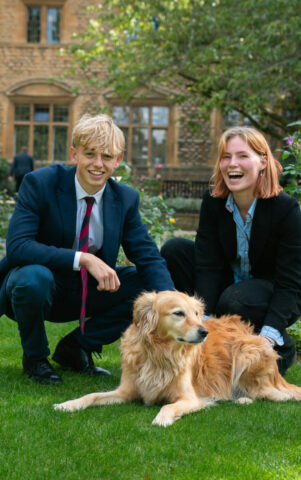 MCS ranks among the top independent secondary schools, and in 2024 was awarded Independent School of the Year for our contribution to social mobility.
MCS ranks among the top independent secondary schools, and in 2024 was awarded Independent School of the Year for our contribution to social mobility.
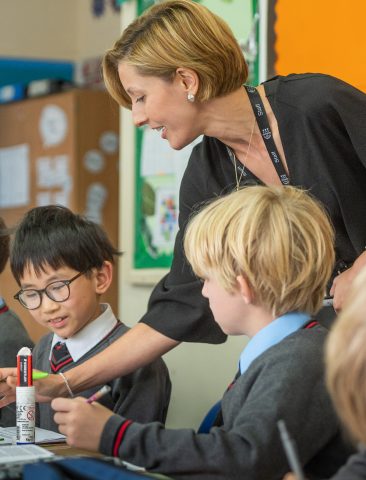
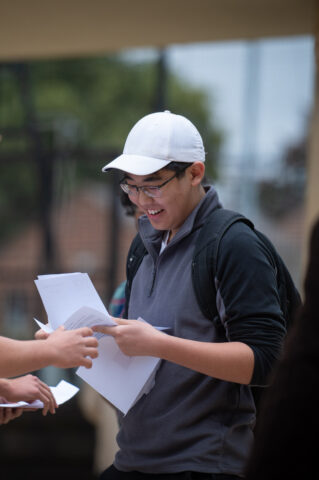 28 of our pupils achieved 10 or more 8 or 9 grades in 2024.
28 of our pupils achieved 10 or more 8 or 9 grades in 2024.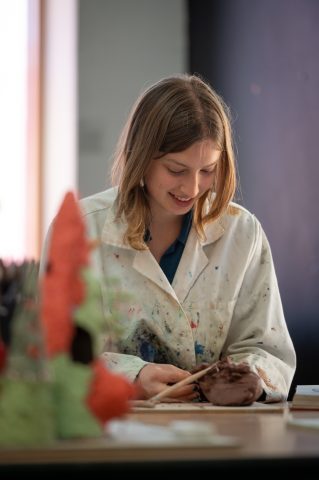
 In 2023-24, MCS received over £448,000 in donated funds.
In 2023-24, MCS received over £448,000 in donated funds.